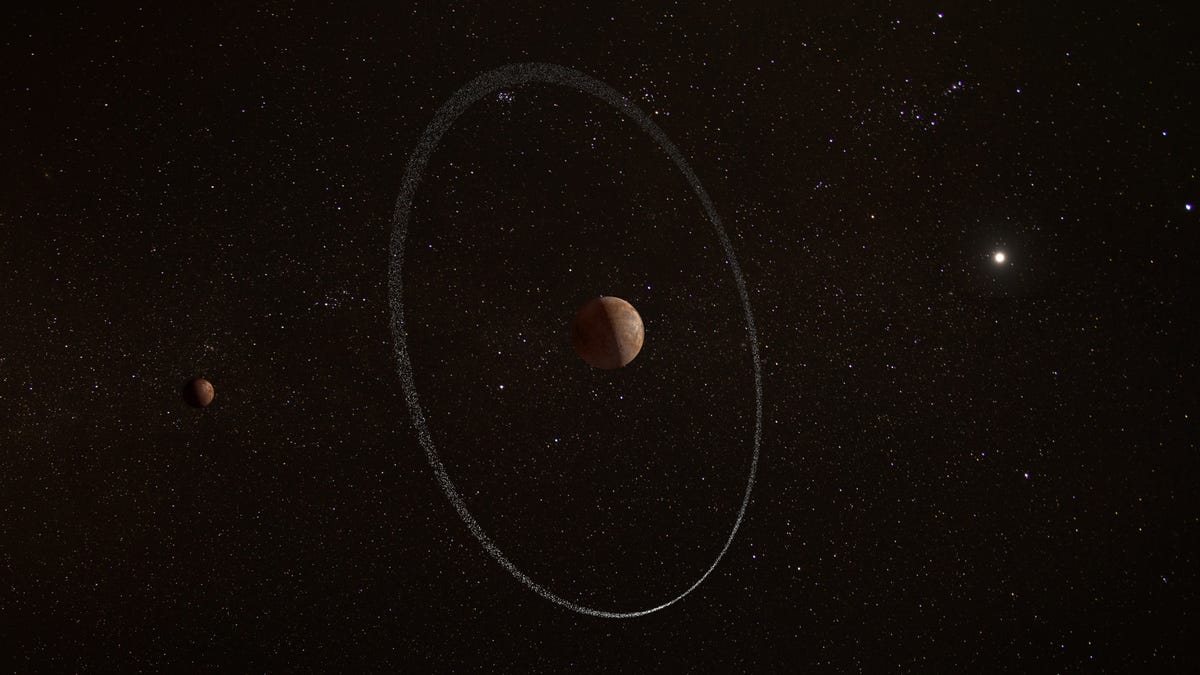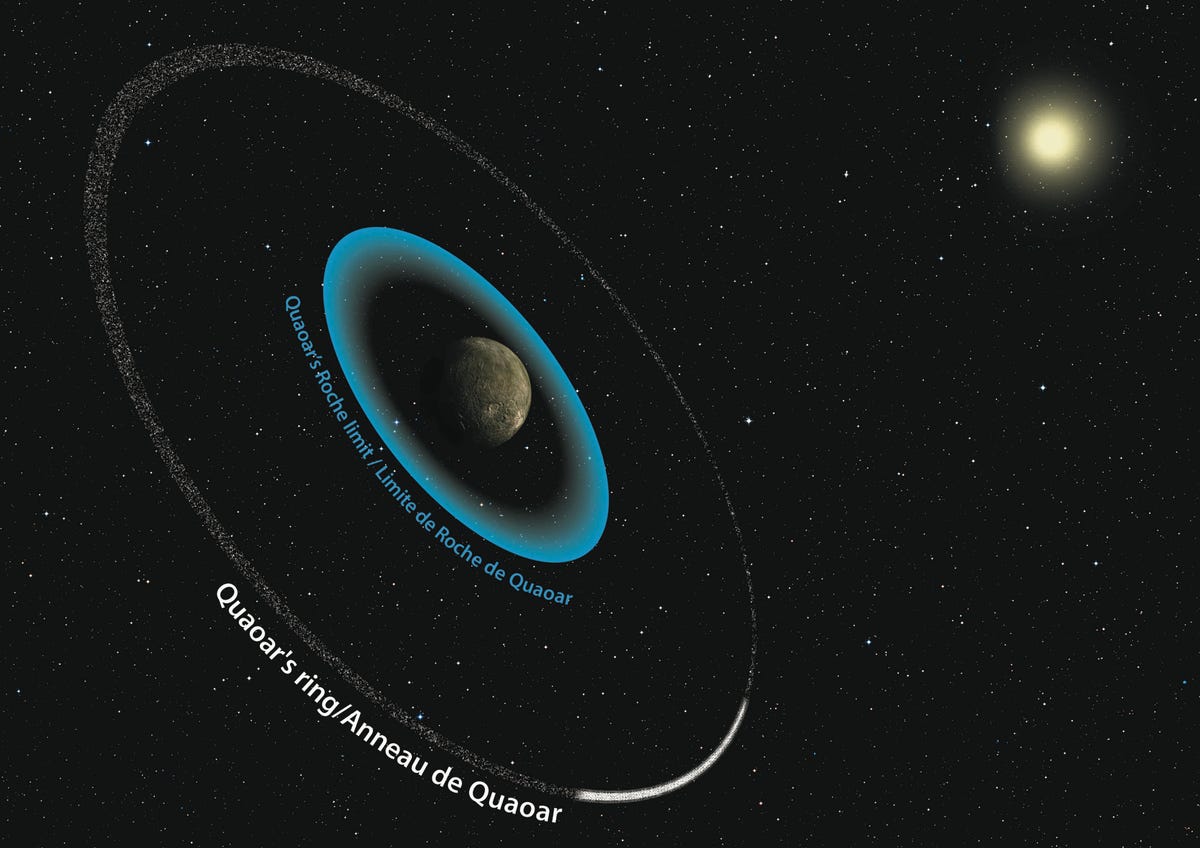
An artist’s impression of Quaoar.
ESA
Rings aren’t just for glamorous giant planets like Saturn. An international team of scientists has discovered a confounding ring system orbiting the dwarf planet Quaoar, a Pluto-sized world beyond the orbit of Neptune.
This newfound cosmic bling orbits much farther out than other ring systems, causing astronomers to rethink existing theories about how such rings form.
“Everyone learns about Saturn’s magnificent rings when they’re a child, so hopefully this new finding will provide further insight into how they came to be,” University of Sheffield Professor Vik Dhillon said in a statement.
Dhillon is co-author of a study out Wednesday on the discovery in the journal Nature.
The rings are too small, faint and distant to see in a direct optical image. They were found instead using a high-speed camera called HiPERCAM, which is mounted on the world’s largest optical telescope in the Canary Islands. The ultra-sensitive instrument watched as Quaoar occulted, or passed in front of, a star in the background. The dwarf planet momentarily blocked out the light from the star, but it was also preceded and followed by two smaller dips in the light, a classic tell of an otherwise unseen ring system.


This illustration shows the rings of Quaoar and the inner blue line indicates the Roche limit, previously thought to be the farthest out a ring system can orbit and survive.
ESA
The other known ring systems in our solar system orbit the four giant outer planets — Jupiter, Saturn, Uranus and Neptune — as well as dwarf planets Chariklo and Haumea. In all these cases, the rings survive because they orbit relatively close-in, maintaining their form due to the planet’s gravitational pull.
This makes it odd that Quaoar’s rings seem to remain constant at a distance rather than drifting away into space or coming together (a process called accretion) to form a new celestial object. In fact, Quaoar’s rings orbit at a distance twice as far as what was previously thought to be the limit for such a system to survive.
Just when we thought we understood our own corner of the cosmos, some minor rock reminds us of how little we know.
